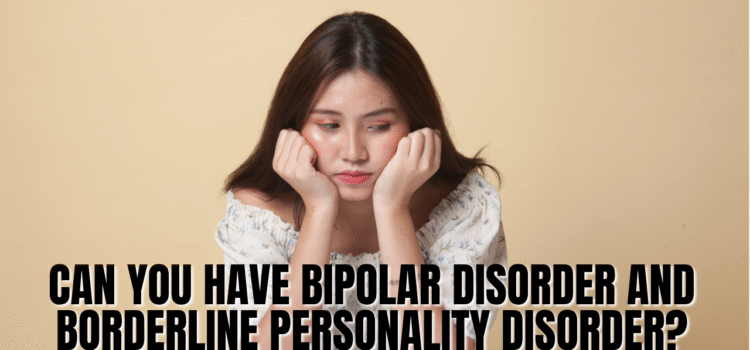
Can You Have Bipolar Disorder and Borderline Personality Disorder?
Mental health diagnosis and treatment can be complex, especially when different conditions share similar symptoms. If you’ve ever wondered, “Can you have bipolar disorder and borderline personality disorder?” the answer is yes. Many individuals experience both psychiatric conditions simultaneously—a situation known as a dual diagnosis126.
What Is Bipolar Disorder?
Bipolar disorder is a mood disorder marked by significant shifts in mood, energy, and activity levels. People with bipolar disorder experience episodes of:
- Mania or hypomania: Elevated mood, increased activity or energy, racing thoughts, and sometimes risky behaviors.
- Depression: Periods of intense sadness, low energy, and decreased interest in activities.
There are several types of bipolar disorder; bipolar I involves more severe manic episodes, while bipolar II has patterns of depressive and hypomanic episodes13.
For more in-depth details, see the National Institute of Mental Health’s guide on bipolar disorder.
What Is Borderline Personality Disorder?
Borderline personality disorder (BPD) is a personality disorder primarily characterized by:
- Intense mood swings and emotional instability
- Poor self-image
- Impulsive behaviors (such as spending sprees, unsafe sex, or substance abuse)
- Unstable relationships
- Fear of abandonment
BPD often involves difficulty regulating emotions and is associated with marked impulsivity and a pattern of unstable interpersonal relationships123.
For comprehensive information, visit the National Alliance on Mental Illness’ BPD resource.
Can These Disorders Coexist?
The Reality of Dual Diagnosis
Research shows that a significant number of people can be diagnosed with both bipolar disorder and borderline personality disorder. Studies estimate that:
- About 10% of people with bipolar I and 20% with bipolar II also meet criteria for BPD.
- Conversely, around 20% of people diagnosed with BPD are also diagnosed with a bipolar spectrum disorder1236.
This comorbidity—sometimes called “borderpolar”—can result in more complex symptoms and require integrated treatment approaches56.
How Do Symptoms Overlap?
Both disorders can present with mood instability, impulsive behavior, and suicidal tendencies. However, there are important differences:
| Feature | Bipolar Disorder | Borderline Personality Disorder |
| Mood Changes | Last days to weeks (mania, depression cycles) | Rapid shifts, often in hours or a day |
| Impulsivity | Mostly during manic or hypomanic phases | Chronic and linked to relationships |
| Relationship Instability | May occur but less central | Core symptom (fear of abandonment) |
| Self-Image | May change during episodes | Frequently unstable and shifting |
| Triggers | Sometimes unrelated to life events | Often reaction to interpersonal stress |
It’s not uncommon for symptoms to overlap, making accurate diagnosis challenging. A mental health professional’s expertise is crucial for proper assessment1236.
Impact of Having Both Disorders
Having both comorbid bipolar disorder and BPD can result in:
- More severe symptoms and greater mood instability
- Higher risk of hospitalization and substance use
- Increased likelihood of suicidal thoughts or behaviors
- Challenges in workplace and social relationships
- Greater difficulty responding to standard treatments2346
Treatment Options for Dual Diagnosis
Treatment for individuals diagnosed with both disorders typically involves a combination of approaches:
- Medication:
- Mood stabilizers, antipsychotics, and antidepressants are often prescribed for bipolar symptoms.
- Medication use for BPD is more selective, aimed at managing symptoms like depression or anxiety15.
- Psychotherapy:
- Dialectical behavior therapy (DBT): Gold standard for BPD, also shown to help those with mood disorders.
- Cognitive behavioral therapy (CBT): Effective for managing depression and regulating mood.
- Interpersonal and social rhythm therapy: Helpful for stabilizing routines in bipolar disorder15.
- Lifestyle and Support:
- Regular routines, consistent sleep, monitoring symptoms, and ongoing support from mental health providers.
It’s essential for treatment to be tailored to the individual, taking into account the presence and interaction of both disorders125.
When to Seek Help
If you or someone you know is experiencing symptoms of either or both disorders—especially thoughts of self-harm—reach out to a mental health professional. Proper diagnosis, early intervention, and integrated care make a significant difference in outcomes.
FAQs
- Can you have both bipolar disorder and borderline personality disorder?
Yes, it’s possible and not uncommon for individuals to be diagnosed with both bipolar disorder and BPD. This dual diagnosis can lead to more complex symptoms and requires specialized treatment approaches168. - How are bipolar disorder and borderline personality disorder different?
While both can involve mood swings and impulsivity, bipolar disorder features distinct episodes of mania or depression that last days to weeks, whereas BPD involves rapid mood changes triggered by interpersonal issues and persistent relationship instability137.
3. What are the treatment options for people with both disorders?
A combination of medication (for mood stabilization) and therapies like dialectical behavior therapy (DBT) is typically recommended. Treatment is individualized and often supported by lifestyle changes and social support












